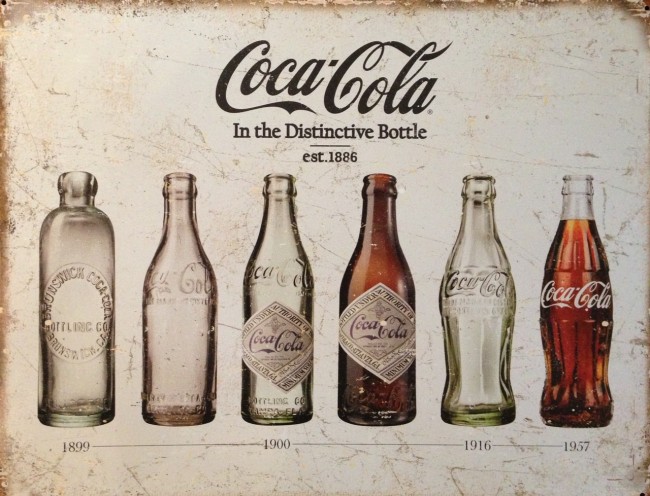
Every now and then it’s worth checking in at the USPTO to see what’s cooking in the world of non-traditional product configuration trademarks:

As it turns out, the Big Green Egg is seeking to be more than a word mark — two

Every now and then it’s worth checking in at the USPTO to see what’s cooking in the world of non-traditional product configuration trademarks:

As it turns out, the Big Green Egg is seeking to be more than a word mark — two…
 In case you missed SHARKNADO last year, fear not, the sequel SHARKNADO 2 — The Second One, is taking the country by storm, and it is reportedly even better than the first SHARKNADO film. Not having seen either, I’m not sure whether that’s saying much.
In case you missed SHARKNADO last year, fear not, the sequel SHARKNADO 2 — The Second One, is taking the country by storm, and it is reportedly even better than the first SHARKNADO film. Not having seen either, I’m not sure whether that’s saying much.
What is even harder to avoid seeing, however, is…
 Months after Amazon’s recent media ploy, drones continue to capture news headlines. Hours ago, an AP story ran, suggesting that the Federal Aviation Administration’s present ban on commercial drones will result in global competitors flying right by the U.S., leaving us in their economic dust, as other countries around the globe embrace the…
Months after Amazon’s recent media ploy, drones continue to capture news headlines. Hours ago, an AP story ran, suggesting that the Federal Aviation Administration’s present ban on commercial drones will result in global competitors flying right by the U.S., leaving us in their economic dust, as other countries around the globe embrace the…
– Draeke Weseman, Weseman Law Office, PLLC
Recently, Steve wrote a piece about the branding at a Saint Paul Vietnamese restaurant named iPho. Pho is a popular, traditional Vietnamese street food – a simple soup made by combining rice noodles and meat in a large bowl filled with aromatic broth. One of the most…
Coca-Cola settled on its famous contour bottle design almost 100 years ago, in 1916, after several years of trials with other far less distinctive shapes (at least under today’s standards):
 Federal trademark registration data confirms the first use date to be July 8, 1916. The description of the contour bottle design mark in 1960 was:…
Federal trademark registration data confirms the first use date to be July 8, 1916. The description of the contour bottle design mark in 1960 was:…
As promised, here are some further thoughts, lessons learned, and remaining unanswered questions concerning the recent and long-anticipated decision of the Second Circuit Court of Appeals in Christian Louboutin S.A. v. Yves Saint Laurent Am. Holding, Inc.
Lessons Learned for Marketing Types:
…
The Louboutin lacquered red sole trademark is the subject of great debate in the trademark world, fashion industry, popular news media, and among law school academics and friends of the court.
I’m just not seeing it. I really don’t see a viable trademark claim here for Louboutin. Not for the reasons…
I’d venture to say that virtually every product sitting on a store shelf is crying out "try me" — some more colorfully than others, some more subtly than others, some more creatively than others, some more persuasively than others. However, most don’t just some out and say the words.
Assuming that to be the case, is it right that only one sauce brand can actually come out and say it?
Hat tip to GuestBlogger Mark Gallagher of BlackCoffee for providing the photo on the left and raising the question.
Turns out the "TryMe" brand has a long history, and it was first registered in 1926 with these style and format limitations (making reasonable a single syllable pronunciation with a silent "e"):

Then TRYME registered in 1996, again as a compressed mark, but this time without any style or format limitations (making the "TryMe" usage possible and still supporting the registration), and it now appears from the photos above, that the brand owner favors a compressed style that encourages a two syllable pronunciation ("TryMe").
I’m not sure if James Brown ever promoted the "TryMe" brand, but it might be a nice fit . . . .
It all leaves me wondering whether this two-syllable usage and migration undermines the validity of the trademark, by placing "TryMe" closer to the category of non-protectable informational matter.
For a sampling of other words and phrases found in certain contexts to be merely informational and not worthy or capable of trademark protection, see below the jump.Continue Reading TryMe? Trademark or Informational Matter?
 On this Valentine’s Day, after enduring weeks of the same endless running of national retail jewelry chain advertising, leading up to this annually celebrated day of love and affection, I thought it might be fitting to try a few retail jewelry store taglines on for size and examine — at least from a trademark perspective — their protect-ability and likely placement on…
On this Valentine’s Day, after enduring weeks of the same endless running of national retail jewelry chain advertising, leading up to this annually celebrated day of love and affection, I thought it might be fitting to try a few retail jewelry store taglines on for size and examine — at least from a trademark perspective — their protect-ability and likely placement on…
There are many things that serious trademark owners do throughout the lifecycle of a trademark to mitigate risk, protect the valuable goodwill in their underlying brand, and preserve their valuable investment in this important intellectual property asset. Here is a fairly extensive, but certainly not exhaustive, and often forgotten, list of those things:
…